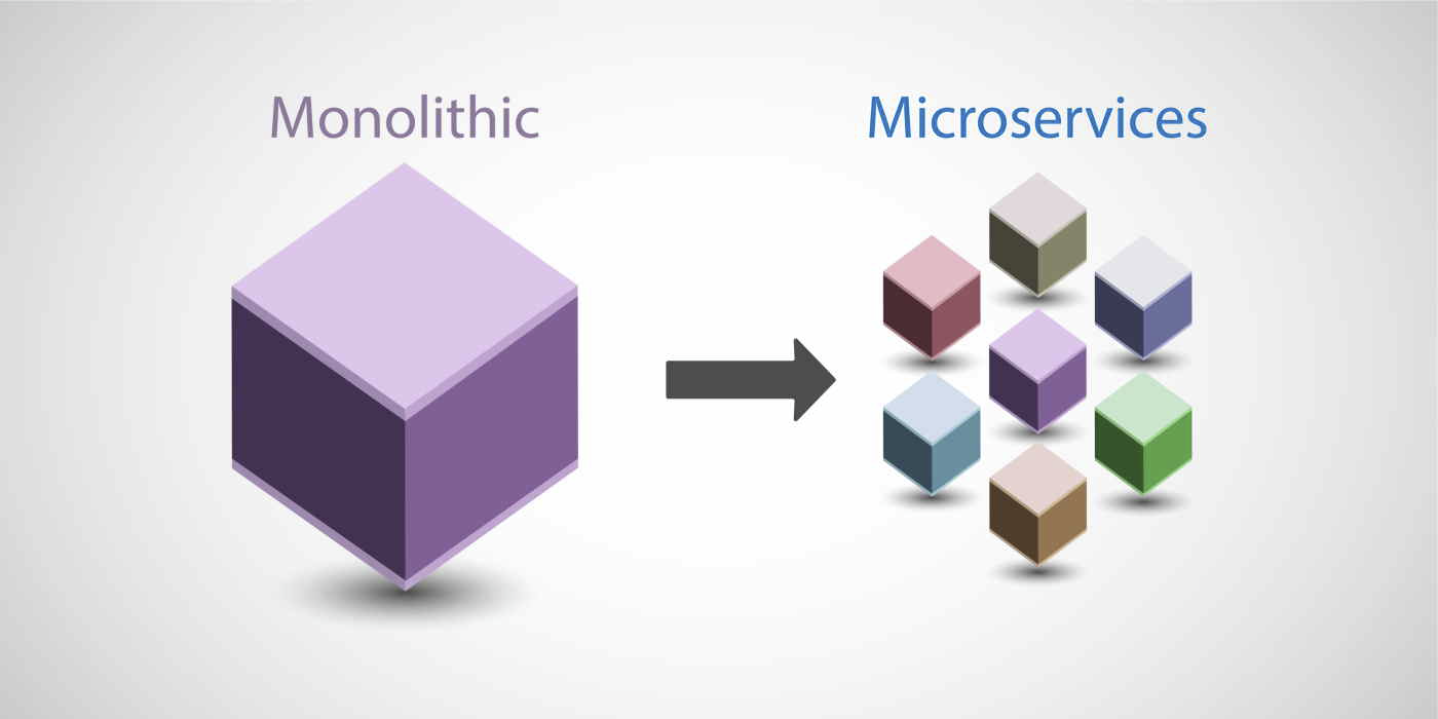
Monolithic vs. Microservices Architecture
Monolithic architecture consists of tightly connected processes that function as a single service. When demand for a particular part of the application grows, the entire system needs to be scaled. As the codebase expands, making updates or adding new features to a monolithic application becomes more challenging, which limits flexibility and innovation. Additionally, if one process fails in a monolithic system, it can affect the entire application, impacting its availability.
To better understand this, let’s compare it to microservices architecture. A monolithic application typically consists of three main components:
- Database: A relational database system that manages a collection of tables.
- Client-side UI: HTML pages and JavaScript that run in a browser.
- Server-side program: This handles HTTP requests, performs logic specific to the domain, updates and retrieves data from the database, and fills the HTML views sent to the browser.
This setup makes a monolithic application a single, unified system, meaning any changes to the server-side program require a complete rebuild and redeployment of the entire application.
Advantages of Monolithic Architecture:
- Simplicity in Development and Deployment: Since all components are centralized, monolithic applications are quicker to develop and deploy. This makes them ideal for smaller teams or projects with a tight timeline.
- Easier to Test: Testing a monolithic application is often simpler since it involves only one codebase.
- Fewer Specialized Skills Needed: Most development teams can build monolithic applications, while microservices require more specialized skills and training.
- Centralized Security Management: Managing security is easier because you only have to track vulnerabilities within one system rather than across multiple services.
Disadvantages of Monolithic Architecture:
- Complexity as the Application Grows: As more features are added, a monolithic codebase can become large and complicated, making it harder to maintain. Changes in one area can unintentionally affect other parts of the system, making it more difficult to troubleshoot.
- Scaling Challenges: Scaling a monolithic app means adding resources to the entire system, which can be costly and inefficient. The ability to scale horizontally is also limited.
- Technology Constraints: The tightly coupled nature of monolithic applications can make it difficult to adopt new technologies or add new functionality without significant effort.
- Single Point of Failure: Since all parts of the application are interdependent, if one component fails, the whole system might go down.
Microservices Architecture
Microservices architecture, in contrast, breaks down an application into independent components, each serving a specific business function. These components communicate with each other via lightweight APIs and can be developed, deployed, and scaled individually. This makes microservices a more flexible and scalable solution for large applications, enabling faster innovation and more efficient growth.
Key Characteristics of Microservices:
- Autonomy: Each service operates independently and is developed, deployed, and scaled separately, with no shared code or implementation between services.
- Specialization: Each microservice is focused on a specific task or function. As a service evolves, it may be broken down further into smaller services.
Advantages of Microservices Architecture:
- Agility: Microservices allow teams to work independently on different services, speeding up development cycles. This decentralization promotes faster decision-making and delivery.
- Scalability: Microservices allow each service to be scaled independently, making it easier to meet demand and optimize infrastructure based on usage.
- Easier Deployment: Microservices support continuous integration and delivery, making it easier to test new ideas and roll back changes if necessary. The ability to fail fast encourages experimentation and innovation.
- Technology Flexibility: Each microservice can be developed using the best tools for its specific task, giving teams more freedom to choose the most suitable technologies.
- Reusability: Microservices can be reused across different parts of an application or even in other projects. This modular approach allows developers to build on existing functionality.
- Resilience: Since microservices are independent, failure in one service doesn’t take down the entire application. This improves the system’s fault tolerance and reliability.
Monolithic vs. Microservices: Key Differences
When deciding between monolithic and microservices architecture, there are several factors to consider:
- Application Size and Complexity: While microservices are better suited for large, complex applications, monolithic architecture remains popular for smaller applications because of its simplicity and ease of deployment. For simple applications or initial proof-of-concept projects, a monolithic approach may be the better choice.
- Team Size and Skills: If your team is small or lacks experience with microservices, it may be easier to start with a monolithic application. On the other hand, if you already have expertise in microservices and want to build a scalable, large system, microservices can provide long-term benefits.
- Growth and Scalability: As your application grows, monolithic systems can become more challenging to scale and maintain. Microservices, however, allow you to scale specific services independently, making them more suitable for applications that are expected to expand significantly over time.
- Development Costs and Timelines: Monolithic applications are generally quicker and cheaper to develop initially, but they may become more costly and harder to maintain as they grow. Microservices, while more expensive to develop upfront, can save costs in the long run due to their flexibility and scalability.
In conclusion, both monolithic and microservices architectures have their place depending on your project’s needs. Monolithic architecture is ideal for small to medium-sized applications or when quick deployment is a priority. Microservices architecture, however, is better for large-scale, evolving applications where flexibility, scalability, and team autonomy are critical.













